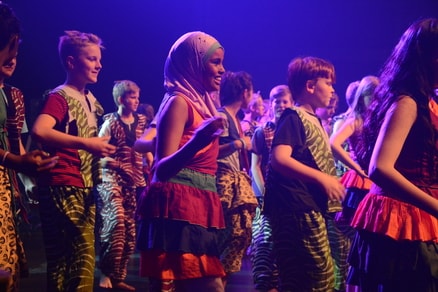World Music Center of Aarhus, a cross-cultural project
1. Context
The city of Aarhus lies at the centre of Denmark on the peninsula of Jutland. The harbour, which is predominantly industrial, is an important factor of its landscape. 315.000 people live in Aarhus and 1,2 million people live in the metropolitan area, representing 23% of the total population in Denmark. Around 12% of the population are immigrants largely from Palestine, Turkey or Somalia.
There is a high concentration of educational institutions and facilities in Aarhus, including 200 university facilities. This city is considered a centre for education; consequently, this large influence of young people and students creates an appropriate atmosphere for cultural programs and activities.
Some of the annual renowned festivals are the NorthSide Festival (a music festival), the Aarhus International Jazz Festival and the Aarhus Festuge (an arts and culture festival, considered the biggest one in Scandinavia).
2. The World Music Center (WMC)
It is significant to be able to create positive cultural meetings between the “old” and the “new” Danes using music and dance as cultural icebreakers.
2.1. Origin and mission
As it has been mentioned above, Aarhus has been enriched by the influx of the many artists from other cultures that have recently immigrated to Denmark. However, a great number of artists from other countries had the skills to work as professionals in their sectors but they could not access in an equal way the complex national system; therefore, this cultural diversity remained untapped. Finally this issue was taken in consideration and new resources and opportunities started to be encouraged.
For that reason, and as an example, the principal aim of the World Music Center project was to give room for experimentation and cultural interaction through dance and music from other parts of the world. For the first time in the city of Aarhus the immigrant artists had the opportunity to offer world music at a music school with pupils from the 4th to the 6th grade.
Through this project, pedagogical methods have been developed for teaching music from different cultures, trough the exchange of teaching experiences and methods on a local, national and international level, in a multicultural society. For that reason and as a result of this program, in 2004 the WMC and the Royal Academy of Music celebrated the First Nordic Conference on Music Education in a Multicultural Society.
2.2. Main actors
This project was a pilot one in Denmark and when it finished the WMC became an institution under Aarhus Music School. The main actors are: the Municipality of Aarhus, the Aarhus Municipality Education Authority, the Royal Academy of Music in Aarhus and the school in itself.
3. Achieved goals
Nowadays, in the second largest city of Denmark exists a long-term project that promotes and creates an educational and diverse environment, where children and young people experience and work actively other cultures’ music traditions with professional artists.
In that way, this is significant to be able to create positive cultural meetings between the “old” and the “new” Danes using music and dance as cultural icebreakers.
A great number of artists from other countries had the skills to work as professionals in their sectors but they could not access in an equal way the complex national system; therefore, this cultural diversity remained untapped.
Through this project, pedagogical methods have been developed for teaching music from different cultures, trough the exchange of teaching experiences and methods on a local, national and international level, in a multicultural society. For that reason and as a result of this program, in 2004 the WMC and the Royal Academy of Music celebrated the First Nordic Conference on Music Education in a Multicultural Society.
Nowadays, the Aarhus Music School (Aarhus Musikskole) is the largest music school in the country. The varieties of classes is endless: a large diversity of instruments, signing lessons, music group for kids 0-5 years old, music workshops for older kids, choirs, orchestras, band academy, etc. The students can be from 0 to 80 years old.
For the first time in the city of Aarhus the immigrant artists had the opportunity to offer world music at a music school with pupils from the 4th to the 6th grade.
4. Other information
This article has been written by Adriana PARTAL, committee on culture of UCLG.
Contact: adriana.partal(at)gmail.com
